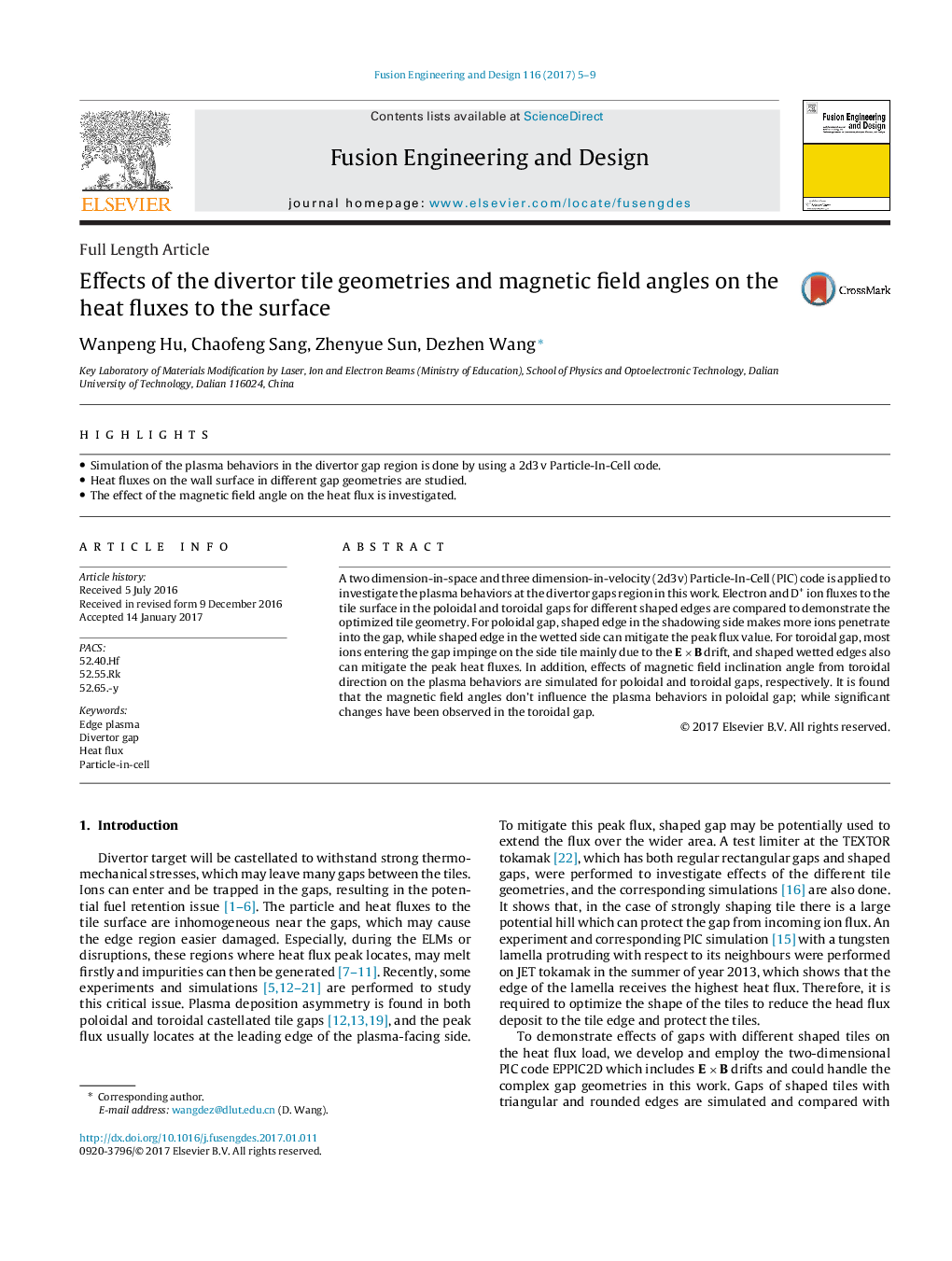| Article ID | Journal | Published Year | Pages | File Type |
|---|---|---|---|---|
| 4921112 | Fusion Engineering and Design | 2017 | 5 Pages |
Abstract
A two dimension-in-space and three dimension-in-velocity (2d3v) Particle-In-Cell (PIC) code is applied to investigate the plasma behaviors at the divertor gaps region in this work. Electron and D+ ion fluxes to the tile surface in the poloidal and toroidal gaps for different shaped edges are compared to demonstrate the optimized tile geometry. For poloidal gap, shaped edge in the shadowing side makes more ions penetrate into the gap, while shaped edge in the wetted side can mitigate the peak flux value. For toroidal gap, most ions entering the gap impinge on the side tile mainly due to the EÂ ÃÂ B drift, and shaped wetted edges also can mitigate the peak heat fluxes. In addition, effects of magnetic field inclination angle from toroidal direction on the plasma behaviors are simulated for poloidal and toroidal gaps, respectively. It is found that the magnetic field angles don't influence the plasma behaviors in poloidal gap; while significant changes have been observed in the toroidal gap.
Related Topics
Physical Sciences and Engineering
Energy
Energy Engineering and Power Technology
Authors
Wanpeng Hu, Chaofeng Sang, Zhenyue Sun, Dezhen Wang,
